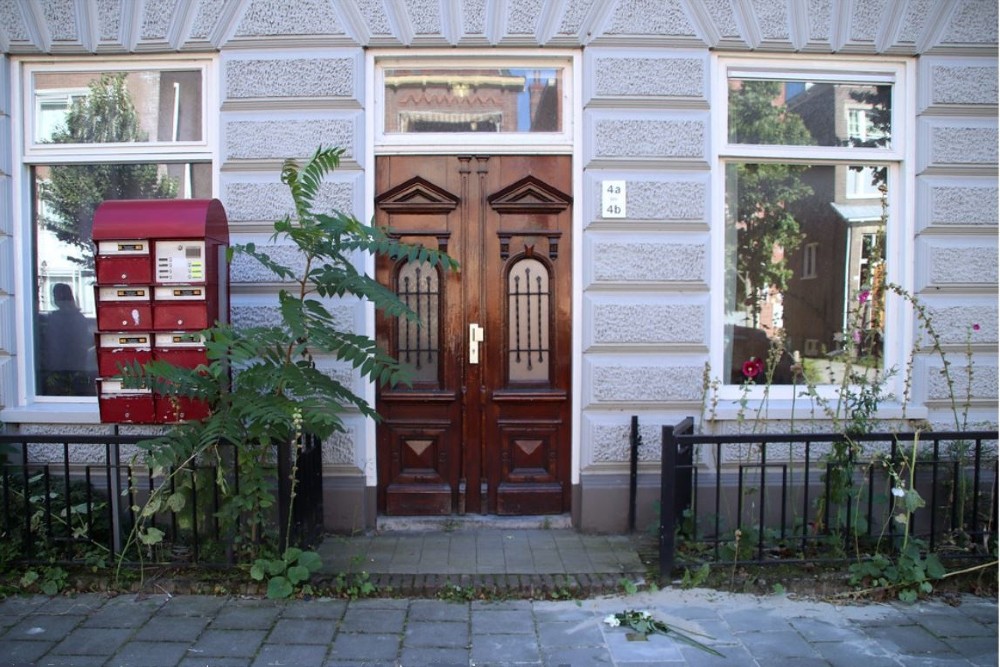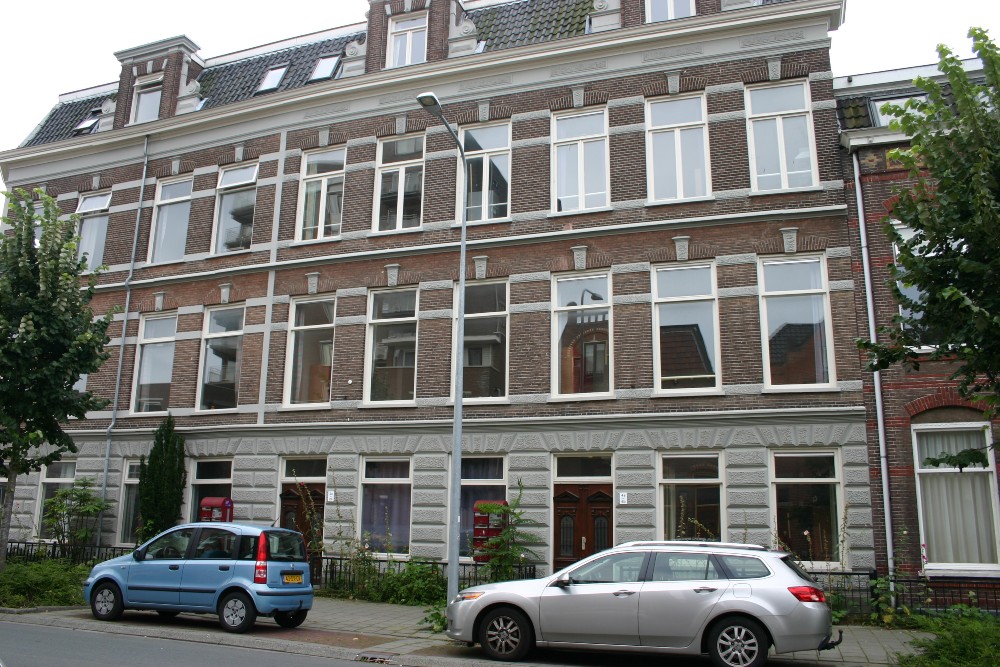Stumbling Stone Kraneweg 4
Here lived:
* Pieter Leendert van Andel, born 1918, forced employment, Berlin, succumbed 23 July 1944, The Hague.
Background
Pieter Leendert van Andel, medical student, born June 17, 1918 in Lokop in the Dutch East Indies, infected with TB and died from it on 23 July 1944 in The Hague.
Pieter Leendert van Andel was called Piet. He spent his first years in the Dutch East Indies, where his father was a health officer. The family moved back to the Netherlands when he was 12.
He started to study medicine in Groningen, and from September 1939, he lived in rooms at Kraneweg 4. He and Rijkje de Nooy became engaged and made plans to go to New Guinea – he as a doctor and she as a nurse. The war intervened. Piet refused to sign a loyalty oath. They could not go into hiding for fear of reprisals against his family.
The Germans forced Piet van Andel to work in the city hospital in Berlin-Spandau, assigned to the pathology department to analyze samples. There he contracted TB and could no longer work. The University of Groningen archives include his name on a list of students who died due to labor in Germany 1943-1945, with an explanation that his parents took him away from the Berlin hospital in mid-March of 1944, seriously ill with a heart condition. In The Hague, he was admitted to the Zuidwal Hospital and was diagnosed with tuberculosis pericarditis. His fiancée Rijkje de Nooy worked there as a student nurse. Piet van Andel died in The Hague four months later.
By the end of the war, Rijkje recovered from the TB she had contracted in the Zuidwal Hospital. Then she carried out her part of the couple’s plan and went to the Dutch East Indies to work as a nurse. She did not forget Piet, and over the years she kept in contact with his family.
Pieter Leendert van Andel's name is included as a student victim of the war on one of three memorial plaques in the University of Groningen's Academy Building (Academiegebouw) on Broerstraat 5.
"Stolpersteine" is an art project for Europe by Gunter Demnig to commemorate victims of National Socialism (Nazism). Stolpersteine (stumbling stones) are small, 10x10cm brass plaques placed in the pavement in front of the last voluntary residence of (mostly Jewish) victims who were murdered by the Nazis. Each plaque is engraved victim’s with the name, date of birth, and place (mostly a concentration camp) and date of death. By doing this, Gunter Demnig gives an individual memorial to each victim. One stone, one name, one person. He cites the Talmud: "A human being is forgotten only when his or her name is forgotten."
Do you have more information about this location? Inform us!
Source
- Text: Bert Deelman & Anne Palmer
- Photos: Bert Deelman (1, 3), Suzanne Matrosov-Vruggink (2)
- Stichting Stolpersteine Schilderswijk Groningen: Biografie Pieter Leendert van Andel
- Stolpersteine.eu
Nearby
Point of interest
- Headquarters 1st SS-Standard Germanic-SS - Groningen
- Remembrance place H.W. Mesdagstraat 3 - Groningen
- Bullet Impact Wassenberghstraat 18 - Groningen
Monument
- War Monument Schilderswijk - Groningen
- Memorial Post Office Groningen - Groningen
- Memorial Academy Building University - Groningen
Cemetery
- Dutch War Graves Northern Cemetery - Groningen
- Commonwealth War Graves Groningen - Groningen
- Dutch War Graves Zuiderbegraafplaats - Groningen
Remembrance Stone
- Stumbling Stones Kraneweg 19 - Groningen
- Stumbling Stones Kraneweg 18 - Groningen
- Stumbling Stones Kraneweg 25 - Groningen
Fortification
- German Shelter Suikerunie Factory - Groningen
- German Tobruk Bunker Suikerunie Factory - Groningen
- German Bunker Haren - Haren






